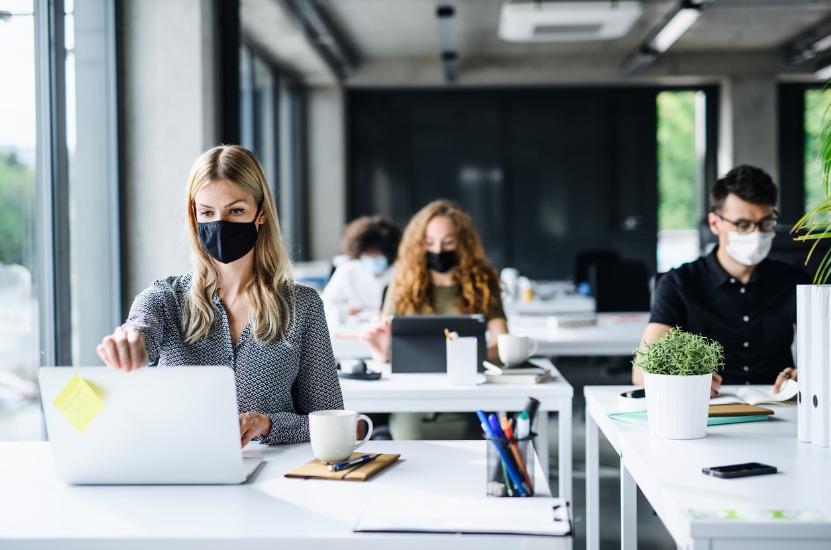With constantly changing guidelines, restrictions and recommendations, it is becoming increasingly difficult to know how to be safe, what to do and what not to do, even – quite literally – from one day to the next, or from one town to the next.
For this reason, it is worth taking a closer look at what has become one of the most widely accepted preventive measures against the spread of COVID-19: facemasks. Or more specifically, face coverings.
Once viewed with a mixture of awe, dismay and contempt by many Western nations when seeing footage of the pedestrians of many smog-filled Asian metropolises during winter months, facemasks have now become another symbol of the unforgiving, unsparing yet strangely unifying nature of the COVID-19 outbreak, a common denominator in almost all countries’ health recommendations, adapted albeit to differing levels of vigour by both politicians and the general population.
However, as with many other shakeups to our status quo that the pandemic has brought, this latest measure in the fight against our joint foe is something which no doubt has come to stay in some form or another.
Consequently, it is important to consider some general recommendations for all of us, regardless of the current severity of local, national, international or company guidelines or protocols in place at any given moment.
Facemask, Face covering or PPE?
Firstly, it is worth clarifying the difference in definition and use of each of these concepts in order to avoid confusion and understand the varying degrees of protection that each affords the user.
PPE, or personal protective equipment, is specialist equipment used by workers in high-risk situations to avoid breathing or coming into direct contact with potentially dangerous substances. Within the COVID context, this refers to all frontline workers such as NHS staff, emergency services and other key workers. All PPE must be sold with accompanying regulated documentation: either a CE Certificate or EU Declaration of Conformity.
Face masks come in various shapes and sizes according to their use and are made to protect all or part of the face from potentially dangerous or foreign objects or particles in a specific context. Think a welder’s mask, painter’s mask, scuba diving mask, surgeon’s mask, etc.
In the case of protection against the spread and transmission of Covid-19 by the general public, face coverings is a much wider term that has been championed by governments and health authorities to describe any item that covers the user’s nose and mouth (two of the three points of entry for the virus, along with the eyes). To this end, religious face coverings, scarves, bandanas, etc. are also considered face coverings.
The accepted wisdom based on the most recent studies is that by covering the nose and mouth, an infected person is less likely to spread the virus via airborne transmission through infected droplets expelled from the body in saliva while sneezing, coughing, speaking, etc. Likewise, a face covering reduces the risk of contracting the virus through the nose and mouth when in close contact with a potentially infected person.
Face coverings can be made of a variety of materials and come in an assortment of shapes and sizes. In most cases, they can be divided into two common shapes: flat-folded, rectangular coverings which normally have pleats to allow it stretch over your face (think a surgical mask); and curved or shaped ‘duck-bill’ coverings, which often fit more snuggly (think KN95 masks).
Because there are currently no regulations for the general use of face coverings, much emphasis is on the employer or user to select the design that works best for each individual. However, it is worth taking into account some key factors:
- Budget – price, stock and availability
Each individual and company should take into account the availability and stock of replacements and the longer-term costs and benefits of each available option. - Durability – disposable and reusable options
The life of each face covering can vary greatly. Along with the long-term cost and environmental impact of disposable options, it is important to consider the benefits of reusable and machine washable alternatives, as well as how quickly and easily they can be dried without becoming damaged and therefore ineffective. - Performance efficiency – filtration and bacterial filtration efficiency
As a rule of thumb for use in lower-risk situations, a simple ‘blow test’ can be sufficient to see how much protection the mask provides the user. The user should not be able to blow out a candle from a distance of about a foot while wearing the mask: a simulation for everyday respiratory exchanges such as coughing and conversation. - Fit – shape, fastening
Especially as most of us are not used to wearing any type of face covering, it is common for the user to adjust it constantly; thus increasing the risk of contaminating the very object that should be protecting us with our potentially infected fingers and hands. Great care should be taken when placing and removing the mask to minimise contact with the area that will be in contact with the nose and mouth. A more comfortable, snug fit will minimise the need for adjustment and possible contamination. Where possible, any adjustment should be made via the straps and with clean hands.
In either case, it is important that the covering fits snugly with minimal gaps around the nose, chin and sides of the mouth, as studies have shown that gaps due to an improper fit of the mask result in up to 60% decrease in a mask’s filtration efficiency.
No matter how much the face covering protects, they should be used together with and never as a replacement for all other established methods of risk management: social distancing, continual hand washing, enhanced cleaning, work from home and smaller, fixed teams.










